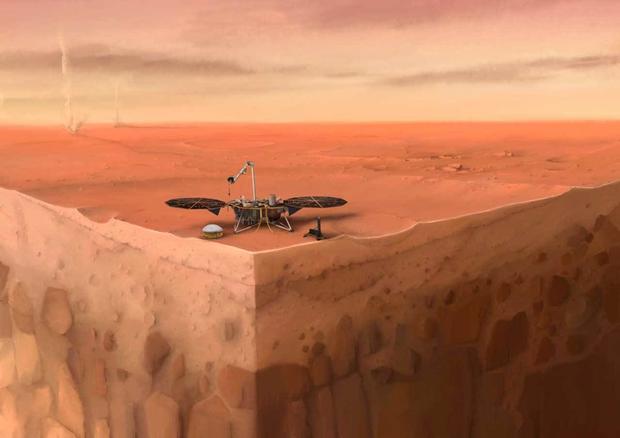After 4 years on Mars, NASA's InSight lander sends one last selfie and then falls silent
NASA's InSight lander has reached the end of its extended four-year mission. NASA announced Monday the lander's battery had finally been exhausted, succumbing to the power-sapping effects of dust buildups on its solar arrays.
"We've thought of InSight as our friend and colleague on Mars for the past four years, so it's hard to say goodbye," Bruce Banerdt, the principal investigator, said in a statement. "But it has earned its richly deserved retirement."
Flight controllers at NASA's Jet Propulsion Laboratory in Pasadena, California, had been monitoring a steady decline in power due to a thick coating of martian dust and decided earlier to declare an official end to the mission if the spacecraft failed to respond after back-to-back calls from Earth.
That has now happened, and while NASA will continue to listen for a signal, it's not considered likely. The last time InSight phoned home was on December 15.
"InSight has more than lived up to its name," said JPL Director Laurie Leshin. "As a scientist who's spent a career studying Mars, it's been a thrill to see what the lander has achieved. ... Yes, it's sad to say goodbye, but InSight's legacy will live on."
InSight recently sent back one last selfie, shared by NASA via Twitter on Monday.
"My power's really low, so this may be the last image I can send," the message said. "Don't worry about me though: my time here has been both productive and serene. If I can keep talking to my mission team, I will — but I'll be signing off here soon. Thanks for staying with me."
The $1 billion InSight mission was launched from Vandenberg Space Force Base in California on May 5, 2018. The spacecraft landed on a broad plain known as Elysium Palitia the following November for a planned two-year mission.
InSight was equipped with two primary instruments: the Seismic Experiment Interior Structure (SEIS) seismometer, provided by the French space agency, CNES; and the Heat Flow and Physical Properties Probe (HP3) provided by the German Aerospace Agency, DLR.
The heat probe, nicknamed "the mole," was designed to hammer its way 16 feet below the martian surface, using sensors to measure slight differences in temperature. The goal was to collect data on the soil's thermal conductivity, allowing researchers to extrapolate temperatures all the way to the core 2,000 miles below.
But the soil at the landing site proved two clumpy for the instrument to cope with and despite repeated attempts, it was unable to penetrate more than a few inches.
The seismometer, however, worked flawlessly, detecting some 1,319 marsquakes during its four years of operation, including shock waves from meteoroid impacts.
"With InSight, seismology was the focus of a mission beyond Earth for the first time since the Apollo missions, when astronauts brought seismometers to the moon," said principal investigator Philippe Lognonné of Institut de Physique du Globe de Paris. "We broke new ground, and our science team can be proud of all that we've learned along the way."
NASA still has two active rovers on Mars: Curiosity, which landed in 2012, and Perseverance, which arrived in February along with a mini helicopter named Ingenuity.





